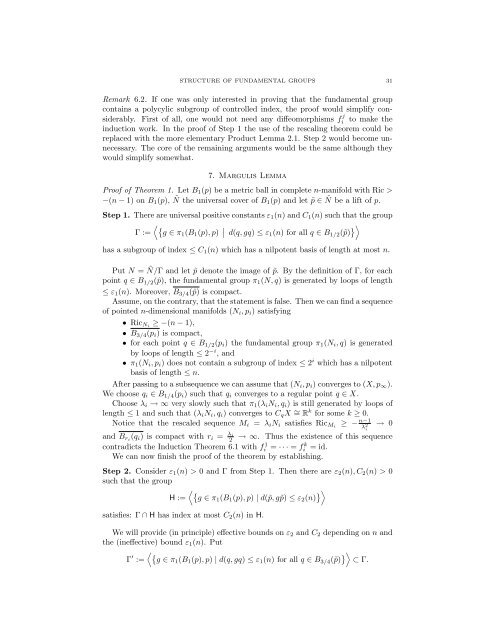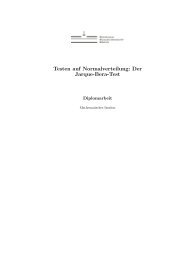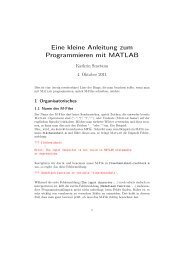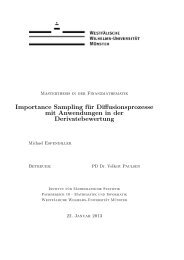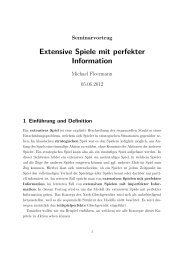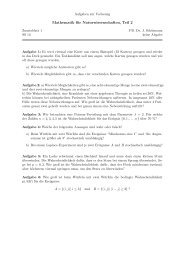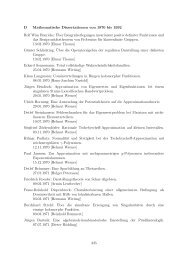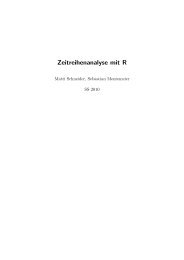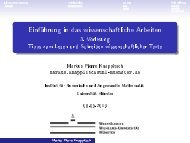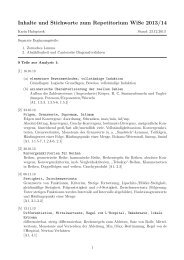Margulis Lemma
Margulis Lemma
Margulis Lemma
You also want an ePaper? Increase the reach of your titles
YUMPU automatically turns print PDFs into web optimized ePapers that Google loves.
STRUCTURE OF FUNDAMENTAL GROUPS 31<br />
Remark 6.2. If one was only interested in proving that the fundamental group<br />
contains a polycylic subgroup of controlled index, the proof would simplify considerably.<br />
First of all, one would not need any diffeomorphisms f j i to make the<br />
induction work. In the proof of Step 1 the use of the rescaling theorem could be<br />
replaced with the more elementary Product <strong>Lemma</strong> 2.1. Step 2 would become unnecessary.<br />
The core of the remaining arguments would be the same although they<br />
would simplify somewhat.<br />
7. <strong>Margulis</strong> <strong>Lemma</strong><br />
Proof of Theorem 1. Let B 1 (p) be a metric ball in complete n-manifold with Ric ><br />
−(n − 1) on B 1 (p), Ñ the universal cover of B 1 (p) and let ˜p ∈ Ñ be a lift of p.<br />
Step 1. There are universal positive constants ε 1 (n) and C 1 (n) such that the group<br />
〈 {g<br />
Γ := ∈ π1 (B 1 (p), p) ∣ d(q, gq) ≤ ε1 (n) for all q ∈ B 1/2 (˜p) }〉<br />
has a subgroup of index ≤ C 1 (n) which has a nilpotent basis of length at most n.<br />
Put N = Ñ/Γ and let ˆp denote the image of ˜p. By the definition of Γ, for each<br />
point q ∈ B 1/2 (ˆp), the fundamental group π 1 (N, q) is generated by loops of length<br />
≤ ε 1 (n). Moreover, B 3/4 (ˆp) is compact.<br />
Assume, on the contrary, that the statement is false. Then we can find a sequence<br />
of pointed n-dimensional manifolds (N i , p i ) satisfying<br />
• Ric Ni ≥ −(n − 1),<br />
• B 3/4 (p i ) is compact,<br />
• for each point q ∈ B 1/2 (p i ) the fundamental group π 1 (N i , q) is generated<br />
by loops of length ≤ 2 −i , and<br />
• π 1 (N i , p i ) does not contain a subgroup of index ≤ 2 i which has a nilpotent<br />
basis of length ≤ n.<br />
After passing to a subsequence we can assume that (N i , p i ) converges to (X, p ∞ ).<br />
We choose q i ∈ B 1/4 (p i ) such that q i converges to a regular point q ∈ X.<br />
Choose λ i → ∞ very slowly such that π 1 (λ i N i , q i ) is still generated by loops of<br />
length ≤ 1 and such that (λ i N i , q i ) converges to C q X ∼ = R k for some k ≥ 0.<br />
Notice that the rescaled sequence M i = λ i N i satisfies Ric Mi ≥ − n−1 → 0<br />
λ 2 i<br />
and B ri (q i ) is compact with r i = λi<br />
2<br />
→ ∞. Thus the existence of this sequence<br />
contradicts the Induction Theorem 6.1 with fi 1 = · · · = f i k = id.<br />
We can now finish the proof of the theorem by establishing.<br />
Step 2. Consider ε 1 (n) > 0 and Γ from Step 1. Then there are ε 2 (n), C 2 (n) > 0<br />
such that the group<br />
〈 {g<br />
H := ∈ π1 (B 1 (p), p) | d(˜p, g˜p) ≤ ε 2 (n) }〉<br />
satisfies: Γ ∩ H has index at most C 2 (n) in H.<br />
We will provide (in principle) effective bounds on ε 2 and C 2 depending on n and<br />
the (ineffective) bound ε 1 (n). Put<br />
Γ ′ :=<br />
〈 {g<br />
∈ π1 (B 1 (p), p) | d(q, gq) ≤ ε 1 (n) for all q ∈ B 3/4 (˜p) }〉 ⊂ Γ.


